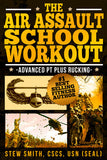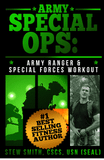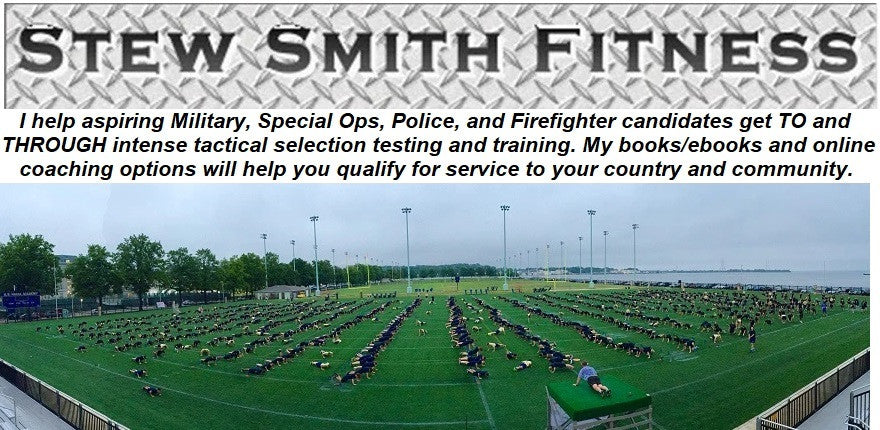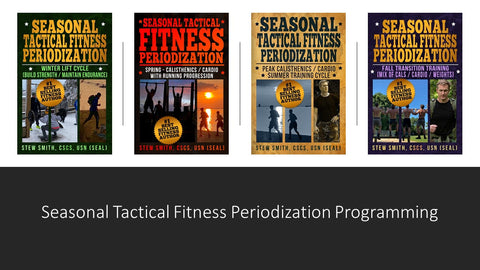RUCK: A Challenging Adventure in Backpacking
If you've never embarked on a hike with a backpack weighing 50+ lbs for many miles, the term "ruck" may be unfamiliar. The definition of ruck can be as simple as strolling with a backpack on a hike or as demanding as swiftly navigating rugged terrain with all your military gear. However, the key concept behind ruck, hump, or forced march is the act of carrying your gear from point A to point B in a backpack.
You may be wondering, what exactly constitutes a ruck? How should you incorporate it into your workouts? Your question has inspired me to conduct an experiment. During a recent three mile ruck test, here's what I found:
MILE ONE: Easy pace / hike: I walked a mile with a 45lb pack at an easy, distracted pace and it took 17 minutes. This is a conversational pace, suitable for leisurely walks but not particularly challenging for a workout. I even took a call on my cell-phone during this first mile.
MILE TWO: Fast Walk Pace - The second mile was completed at a faster walking pace, similar to power-walking, and took 14 minutes. This pace requires some effort but is sustainable for extended periods. The minimum standard for most Army rucks is a 15 minute mile. Power walking is basically Army ruck pace.
MILE THREE: Slow Jog / Rucking Pace - I call this one a short stride shuffle. Faster cadence but shorter stride than running. Moving out at a pace that is only sustainable if you are conditioned for it, this mile took me under 11 minutes. This is what I would consider "rucking."
Ultimately, rucking involves walking fast with a backpack. It's important to find a pace that challenges you without causing physical discomfort. Incorporating rucking into your workouts can provide a fulfilling and invigorating experience.
Enjoy the rucking. See Go Ruck if you want to take your rucking to the next level!
Related article - How many calories does rucking burn?
Programs with RUCKING: Army PFT/CFT Workout, Army Ranger / SF, USMC OCS-TBS, USMC RECON/MARSOC, and others in the Tactical Fitness Section at StewSmithFItness.com.
Who is Stew Smith CSCS? Coach, Trainer, Writer, Podcaster:

Discover the secrets behind Stew Smith's 25+ years experience in military fitness training. A former Navy SEAL, Smith has been honing his training methods for decades, helping people from all fitness levels prepare for the rigors of military service. Whether you're aiming to shed pounds, get ready for basic training, or pursue a career in Special Ops, Smith's workout books and ebooks, available at StewSmithFitness.com, are packed with cutting-edge Tactical Fitness elements used by elite military and law enforcement units worldwide. Dive into Smith's world of fitness and embark on a transformative journey toward peak physical performance.
Training is What We Do:
Need Programming for Fitness Tests and Beyond? We are all about getting you TO and THROUGH your future training program. See how that works.
There is More To StewSmithFitness.com than a You May Know
(In fact, there are more than 40 books, 1000+ articles, online coaching - and more) See More at StewSmithFitness.com
Where to Find More Information About Optimal Performance Training Programs
When you start training again, consider the seasonal tactical fitness model. I call it A WAY to train and obviously not the only way to train. But it offers the opportunity to never neglect your weaknesses, helps with flexibility and mobility, but will also put you at a level of physical abilities where you are happy with your overall ability to do just about anything. We have a system where the seasons dictate our training. When it is nicer outside, we tend to run and do more calisthenics. When it is colder and not so nice, we lift more, run less, and still maintain our outdoor activities with shorter runs and rucks. Check it out: Seasonal Tactical Fitness Periodization System.
These Seasonal Tactical Fitness BLOCK Periodization programs will walk you through 4 x 4 weeks cycles with 16 weeks of each season in two programs. (32 total weeks)

Increase Strength & Crush the PST / PAST
3 Weeks Strength - 1 Week PT / Cardio Focus
(16 weeks)
These programs will walk you through 4 cycles with 12 weeks of each season in two programs.
The Specific Military / Special Ops Physical Fitness Workouts
Navy SEAL Workout Phase 1
Navy SEAL Workout Phase 2 - 3
Navy SEAL Workout Phase 4 Grinder PT
Navy SWCC Workout
Army / Air Force Advanced Fitness / Special Ops
Army PFT Workout (Prep For Rucking, OPAT, ACFT)
Army Special Forces / Ranger Workout
Army Air Assault School Workout
Army Airborne Workout
Air Force Special Warfare IFT / OFT / Selection Prep






Advanced Running Program - Special Ops Supplement Plan
USMC RECON / MarSOC Workout
USMC OCS / TBS Workout
USMC IST and PFT
The Combat Conditioning Workout
Air Force PJ / CCT Workout Battlefield Airman Prep Course
The UBRR Upper Body Round Robin Workout / Spec Ops version
The Coast Guard Rescue Swimmer / Navy SAR Workout
The Service Academy Workout (West Point, Navy, Air Force Academy)
The Navy, Air Force, Marine Corp Boot Camp Workout
The Law Enforcement Physical Fitness Workouts
The FBI Academy Workout | FBI Workout Vol 2
The DEA Workout
The FLETC Workout - Ace the PEB
The PFT Bible: Pushups, Sit-ups, 1.5 Mile Run
The Fire Fighter Workout - Ace the CPAT
Online Coaching Options
Online PT CLUB - Weekly Workouts created personally for you.
New Member's Only Content / Services Program!
If you want access to years worth of workouts, many of the top eBOOKs, favorite workouts of the week, free fitness APP, closed Facebook Group, video / picture library of exercises, and more access to LIVE Q/A sessions check out the Stew Smith Fitness Members Section.
The dashboard below has the links to all the information, archives, videos, and links to workouts, podcasts, live Q and A lessons.
Consider this! - A Membership Program and Gain Access to Exclusive Content
(click for Fitness Club Dashboard - members only)
Questions? Just email - Stew@StewSmith.com
At StewSmith.com - List of Products and Services
- FREE Articles
- Podcasts and Swimming Videos (Youtube, TikTok, Instagram)
- eBooks
- Books and eBooks in PRINT
- Stew Smith Fitness Club membership site
- Online Coaching
Stew Smith Fitness





















